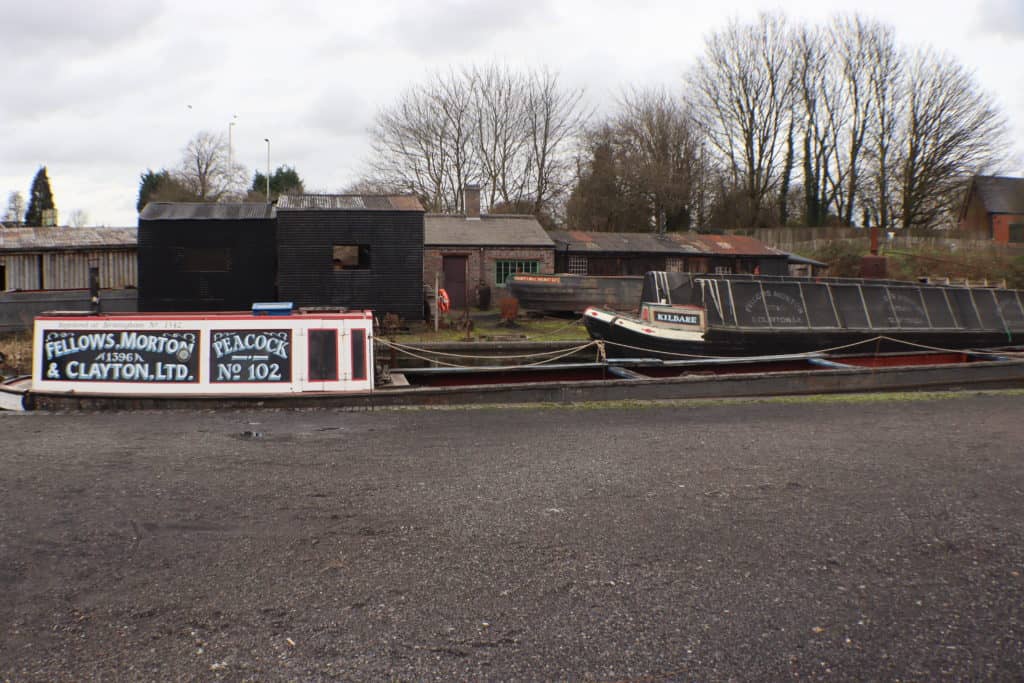In this episode the children meet John Barry, a boy who lives and works with his family on a canalboat, and learn more about life on the “cut”
Canal Mania

During the Industrial Revolution, the construction and use of canals exploded.
There were over 170 miles of canals criss-crossing all over Birmingham, the Black Country and beyond at its height. From coal to clothing, this quickly became the main way goods were delivered across the region.
It was more than a job for many – it was a way of life. But with the increase in vehicles on the roads – and many new road networks springing up, “canal mania” was set to all but cease by the end of the 20th century, although canals are still popular for recreation and holidays.
How did it all start?
The canal network was designed and built thanks to two key figures from history:
James Brindley (1716-1772)

- A famous Engineer who built the first still water canals in Britain.
- Discovered how to make canals waterproof so that the water didn’t all leak out!
- Created the ‘Brindley Lock’ so that he could build canals that went up and down hills.
- Designed the first Canal Aqueduct.
- Supervised the first canals between the Black Country and Birmingham, completed in 1771.
Thomas Telford (1757-1834)

- Taking up the mantle left by James Brindley was Thomas Telford, a prolific engineer who worked on road and canal projects.
- While James Brindley’s Canal projects followed the landscape. Thomas Telford created his own routes and built impressive structures.
- One of these structures was Galton Bridge built in 1829. At the time of its construction it was the tallest in the world.
Canal Art
The Canal is home to a traditional art of brightly painted tin. It originally was just a popular style of decoration by the companies who ran fleets of narrowboats – and by the families who owned them. After all, the boats were frequently their homes and they took every bit of care to make them pleasant. They’ve become something people like to buy as gifts – even today.
The Masthead Lamp
The lamp the children see in the episode is a Mast Head Lamp like this one. This lamp is from the tar tanker the Stour which is moored in the canal arm on the BCLM site. It is paraffin fuelled and features traditional canal art.

Canal Slang
Ritty = Dirty
The Cut = The Canal
Gong Goozler = someone who’s staring at you!
Legging = lying on your back to push the boat through narrow tunnels by “walking” along the ceiling or walls.
Crack the paddles = A paddle is a ‘trap-door’ that allows or prevents water to flow through a lock gate. So the phrase means to wind the paddles up on a lock gate.
Strapping in = This means stopping the boat on a post using a rope.
Cheesing the ropes = Cheesing is to tidy your ropes by winding them into a spiral shape.
A Childhood on “the Cut”
John Barry and his family work for Fellows and Morton. Their job was to move different cargos around from Ironworks to Chocolate.

It was hard work with all the family pitching in, whether to “crack the paddles” to open the locks or “legging” the boat through tunnels and tending to the horses.
And whilst it was mandatory for children to go to school after 1880, canal children rarely did. By the time the children arrived at the schoolhouse their canal boat home would be miles away!
Despite lacking formal education, it’s thought some canal children living and working in the fresh air would have been healthier than those living in polluted cities, although conditions on board could be cramped, as this description shows:
“Some of the canal cabins are models of neatness and a man and two youths might pass a few nights in such very comfortably. Others are the most filthy holes imaginable, what with bugs and other vermin creeping up the sides, stinking mud finding its way through the leaky joints at the end to the bottom of the cabin and being heated by a hot stove, stenches arise therefrom to make a dog sick. In these cabins fathers, mothers, sisters and brothers sleep in the same bed at the same time…”
Fellows and Morton moved cargo along the canals until just after the second world war. With the development of the road network, trucks took over and the canals fell into disrepair. Families like the Barry’s moved into houses in town and had to find other jobs to do.
Activity: Make some ‘canal art’
The boat people on the cut are an important part of the Black Country history – and traditional canal art is just as much part of that history.
Why not get the paints out and give it a try? Choose a bright background of blue, red or green, and then paint some vibrant roses in pinks and oranges.
Maybe you could use your painting to decorate a plant pot. It might make a nice gift for someone you know!
Adventures Through Time is made with support from The Black Country Living Museum




 Apple Podcasts
Apple Podcasts Spotify
Spotify Google Podcasts
Google Podcasts Player FM
Player FM